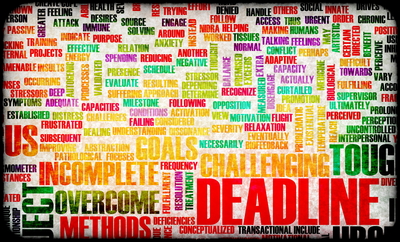In previous blogs (here and here), I have presented a comprehensive model of leadership that I have labeled The Performance Trilogy®. The framework describes the three fundamental processes that must be managed; strategy, execution, and leadership development and the three leadership roles needed for each process; leading, managing and coaching. Leading each of the three processes of the Performance Trilogy® requires very different attributes (i.e. talent and skills). The three most important attributes needed to successfully lead the strategy process are imagination, courage and persuasiveness. The three most important attributes needed to successfully manage the execution process are conscientiousness, productivity and discernment. The three most important attributes needed to successfully coach the leadership development process are integrity, empathy, and teaching skills. These nine attributes are universal and essential for sustainable success in any endeavor you pursue. In this blog we will explore the third of these management attributes required during the execution process, discernment.
Discernment – The ability to consistently make good decisions based on cognitive and intuitive judgement.
Thomas Huxley is quoted as saying “science is simply common sense at its best, that is, rigidly accurate in observation, and merciless to fallacy in logic. The irony of this quote is that scientists and engineers oftentimes are enamored with expert opinions and objective data while ignoring the intuitively obvious. This has led to a more famous quote by Voltaire that “Common sense is not so common”, pointing out the lack of critical thinking that goes into most decisions. Despite the best-laid plans, invariably things never seem to go according to plan. When executing, a critical success factor for managers is to make a high percentage of good decisions. It is the collective decisions made each day that determine the success of an organization over time.
By critical thinking, I mean the ability to choose the best possible alternative after weighing both the positives and negatives of a decision. More often than not managers are faced with choosing between the lesser of two evils. As scientists and engineers, we are trained not to develop conclusions without first obtaining all of the data. While this rule is essential in a technical context, managers rarely have the luxury of having all the information they would like when making decisions. Too often, technical managers have difficulty making decisions with limited data and procrastinate. This rarely leads to better decision-making. In his book Blink, Gladwell makes a convincing argument that the first decision that comes into one’s mind is most often the best one. That instinctual thinking is not capricious but based on the brain’s ability to process both consciously and unconsciously the sum total of all your experience.
My decision-making improved dramatically when I considered both the immediate outcome of a particular decision and the longer-term consequences of the decision on the people involved. Early in my career, the most important decision criteria for me were to ensure an immediate success of the task at hand regardless of the longer-term consequences. Over time I developed an attitude that when making a tough decision, more often than not it is better to be kind than to be right. While this may seem counter intuitive at first, I have found that I have been much more satisfied with the results.
As an example, I had to approve a very expensive decision to bid a large government contract made by one of my managers. I was convinced that we didn’t have much of a chance of winning and that the labor cost we would incur would be very detrimental to our bottom line. After much debate, I approved the bid decision. My rationale was that the manager was so enthusiastic about the contract and so motivated to write a good proposal that the long-term consequences of turning him down and de-motivating one of my more talented managers outweighed the short term hit to our bottom line. You will never find this kind of decision making in any course on managing proposals. Much to my surprise we actually one the contract, but even if we had not, the decision was the correct one in my mind.
Graffeo and Associates is an organization committed to improving the quality of leadership in science and technology (S&T). It was formed in 2008 around the expertise of Dr. Tony Graffeo, a senior executive from Arthur D. Little and Battelle Memorial Institute. Dr. Graffeo has consulted with leading research institutions in the United States, Europe, Latin America and the Middle East, and has created a codified system of leadership development centered around the principles of the Performance Trilogy® which he has taught throughout the world. He is currently a professor at Northeastern University teaching Professional Masters entrepreneurship and leadership courses. His new book, titled “Leading Science & Technology-Based Organizations: Mastering the Fundamentals of Personal, Managerial, and Executive Leadership” will be published in 2018.




Leave A Comment